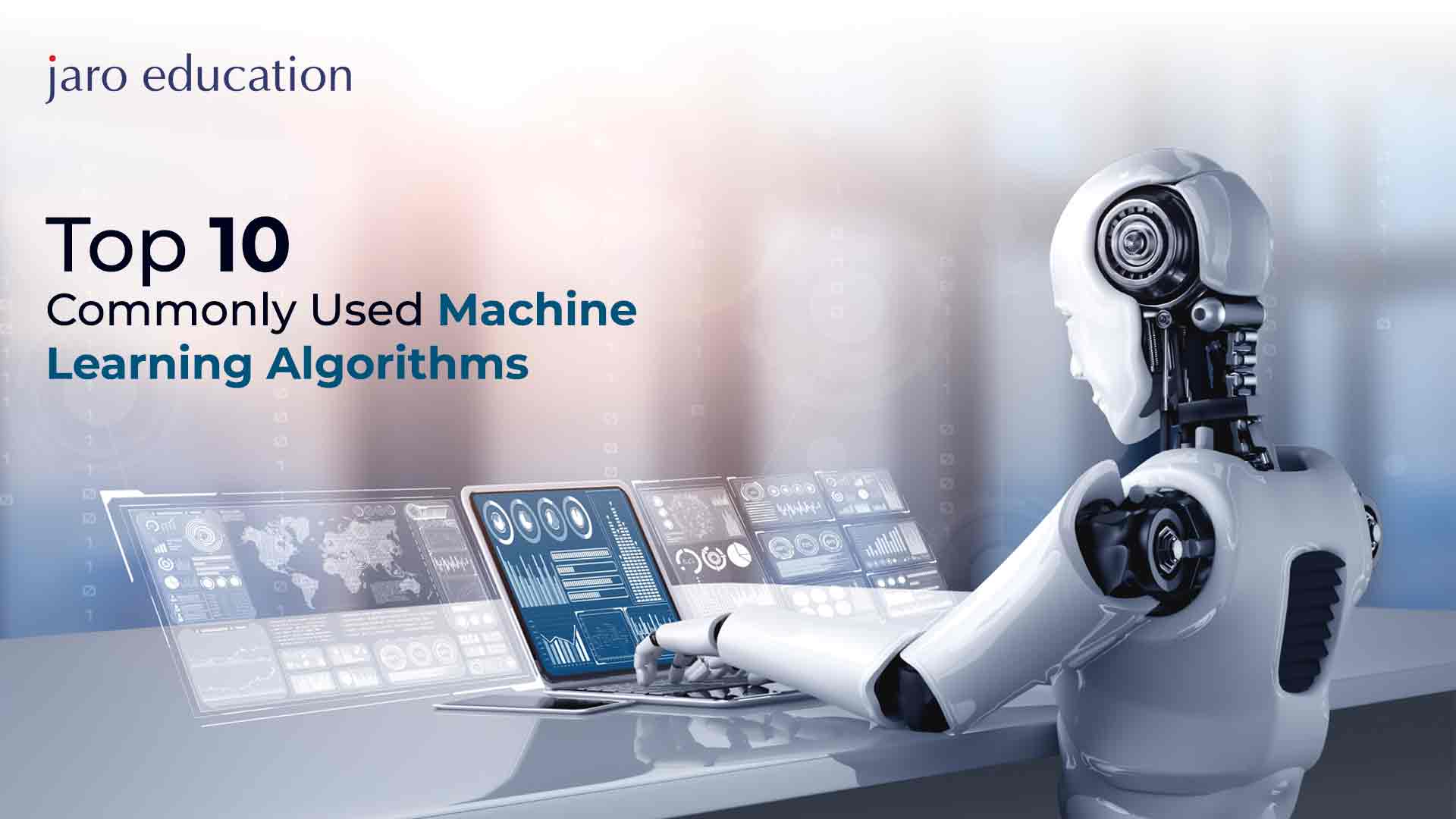
Top 10 Commonly Used Machine Learning Algorithms
Machine learning is a field of computer science that deals with constructing and studying algorithms that can learn from data. It’s been used to power search engines, recommend products, and diagnose diseases. With so many different machine learning algorithms out there, it can be hard to know where to start. By the end of this post, you should have a good understanding of the most popular machine learning algorithms.
Linear Regression
Linear Regression is one of the most commonly used machine learning algorithms. It is a statistical technique that is used to predict the dependent variable based on the independent variable. The linear regression algorithm is used to find the best fit line for the given data set. The line of best fit is the line that minimises the sum of squared errors. The linear regression algorithm is also used to calculate the coefficient of determination, which is a measure of how well the model fits the data.
Logistic Regression
Logistic regression is a statistical model that is used to predict the probability of a binary outcome. The outcome is either 1 (success) or 0 (failure). Logistic regression can be used for classification, such as predicting whether a patient will have a heart attack.
Logistic regression estimates the probability of the outcome by using a logit function. The logit function is defined as:
logit(p) = log(p/(1-p))
where p is the probability of the outcome. The coefficients of the logistic regression model represent the change in the log odds of the outcome for each unit change in the predictor variable. In other words, they represent the effect of each predictor on the odds of the outcome.
Support Vector Machines
Support vector machines (SVMs) are a type of supervised learning algorithm that can be used for both classification and regression tasks. The main idea behind SVMs is to find a hyperplane that best separates the data into two classes. In other words, we are looking for the decision boundary that maximises the margin between the two classes.
Table Of Content
Techniques/ Strategies of Power Electronics Control
PG Certificate Programme in Data Science for Business Excellence and Innovation by IIM Nagpur
Conclusion
Frequently Asked Questions
Techniques/ Strategies of Power Electronics Control
Decision Trees and Random Forests
Decision trees and random forests are two of the most commonly used machine learning algorithms. Decision trees are used to build models that can be used to make predictions about future events. Random forests are used to create models that can be used to predict the outcomes of future events.
Neural Networks
Neural networks are a type of machine learning algorithm that is used to model complex patterns in data. Neural networks are similar to other machine learning algorithms. Still, they are composed of a large number of interconnected processing nodes, or neurons, that can learn to recognise patterns of input data.
Boosting
Boosting is a machine learning technique that combines multiple weak learners to create a strong learner. Boosting is an iterative process where each weak learner is trained on a subset of the data. The aim is to correct the errors of the previous learner and build on top of it, creating a stronger and stronger learner.
K-Nearest Neighbors
The k-nearest neighbours (KNN) algorithm is one of the simplest and most commonly used machine learning algorithms. It is a non-parametric, lazy learning algorithm that can be used for both classification and regression. The KNN algorithm works by storing all training data points and then classifying new data points based on the similarity of their features.
Naive Bayes
Naive Bayes is a simple yet powerful machine-learning algorithm that can be used for both classification and regression tasks. It is a probabilistic algorithm that makes use of Bayesian inference to make predictions. The main advantage of using Naive Bayes is that it is relatively easy to implement and understand. Additionally, it has been shown to be quite effective in practice, especially with high-dimensional data sets.
Dimensionality Reduction
Dimensionality reduction is a type of unsupervised learning algorithm that can be used to reduce the number of features in a dataset. This can be useful for visualising data, increasing computational efficiency, or reducing the amount of data required for training. Common dimensionality reduction algorithms include Principal Component Analysis (PCA) and Linear Discriminant Analysis (LDA).
Model Ensembles
Ensemble learning is a powerful machine learning algorithm that combines the predictions of multiple models to produce more accurate results. Ensemble learning is often used in competition situations where the goal is to outperform other models or in cases where the individual models making up the ensemble are less accurate than we would like them to be.
PG Certificate Programme in Data Science for Business Excellence and Innovation by IIM Nagpur
The PG Certificate Programme in Data Science for Business Excellence and Innovation by IIM Nagpur is designed to equip working professionals with the skills and knowledge necessary to leverage data science in their organisations. The data science course covers a wide range of topics, from basic statistical concepts to more advanced machine learning algorithms. It also includes a significant amount of hands-on training so that participants can immediately start applying what they have learned to real-world problems.
The data science programme is taught by some of the most experienced and respected data scientists in the country, and has been designed keeping in mind the needs of the industry. Thus, it is ideal for working professionals who want to upskill themselves and stay ahead of the curve in this rapidly changing field.
Conclusion
Machine learning is a rapidly growing field with immense potential. However, there are still many common machine-learning algorithms that data scientists use on a daily basis. In this article, we have listed the top 10 commonly used machine learning algorithms along with their brief descriptions. We hope that this list was helpful for those who are just getting started in the field of machine learning.
FAQs

